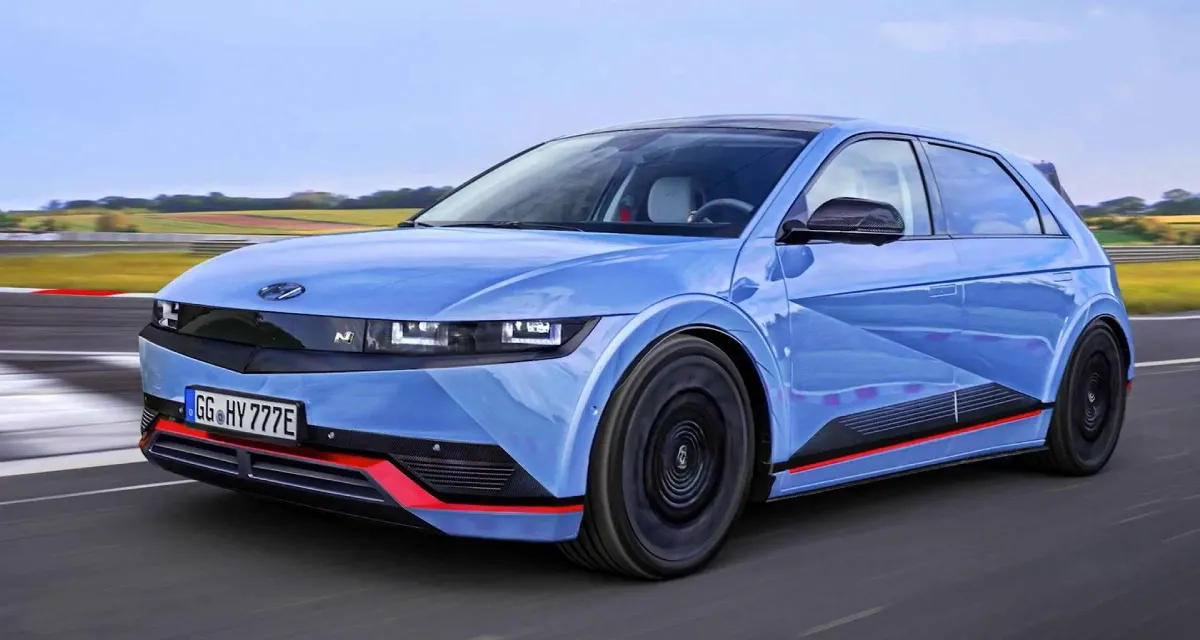

Hyundai Motor sets the bar high as it prepares to roll out an era of EV racing. It recently unveiled its Hyundai Motor’s IONIQ 5 N eN1 Cup Car r ahead of the upcoming Hyundai N Festival motorsports event, a one-make race series to be held in South Korea in late April. It is based on the production-spec Ioniq 5 N and uses the same electronics (PE) system. It will be competing in the N1 class. The new eN1 class will be introduced later this year and will operate under open regulations.
Hyundai began by completely redesigning the vehicle. The front end is all new with a a sizable lip and noticeable dive planes extending from a more useful front bumper. The eN1's body-kit modifications are completed with new over-fenders, and the enormous rear wing is proudly mounted at the back of the vehicle.
Hyundai estimates that the Cup vehicle weighs closer to 4350 pounds, while the roadgoing car weighs slightly over 4900 pounds. Also, The heavy, unneeded 21-inch wheels are no longer there rather a pair of lightweight 18-inch forged wheels covered in race slicks have taken their place. The regular glass windows are replaced with lighter polycarbonate ones, and a fiberglass-reinforced plastic (FRP) replica hood is installed instead of the original one.
Also Read: The 2025 Hyundai Tuscan has been launched at Newyork auto show
Hyundai has taken everything out of the inside that it felt unnecessary. Only the driver's bucket seat remains after the removal of the ordinary seats. Hyundai equips every vehicle with a fire extinguisher and a roll cage that complies with FIA regulations to increase safety.
The engine is untouched under the hood. The eN1 Cup car's twin motors generate 641 hp same as that of road cars. It will also feature the normal car's battery, which can be charged from 10 to 80 percent in 18 minutes and provides 84.0 kWh of useable energy that the race car may also utilize. Although Hyundai hasn't disclosed performance numbers, the conventional car should reach 60 mph in about 3.1 seconds, according to our estimations. A high-voltage shutdown and two-way dampers on the adjustable suspension are two other modifications.
Also to note, The performance electric car is based on Hyundai’s Electric Global Modular Platform (E-GMP) and comes with a robust battery thermal management system and regenerative braking.
Also Read: 1. Streamer IShowSpeed buys A Lamborghini Huracan With a Special Cristiano Ronaldo Livery 2. Here’s why you should consider buying a car this April. 3. Which Indian Cars are UNSAFE to drive?